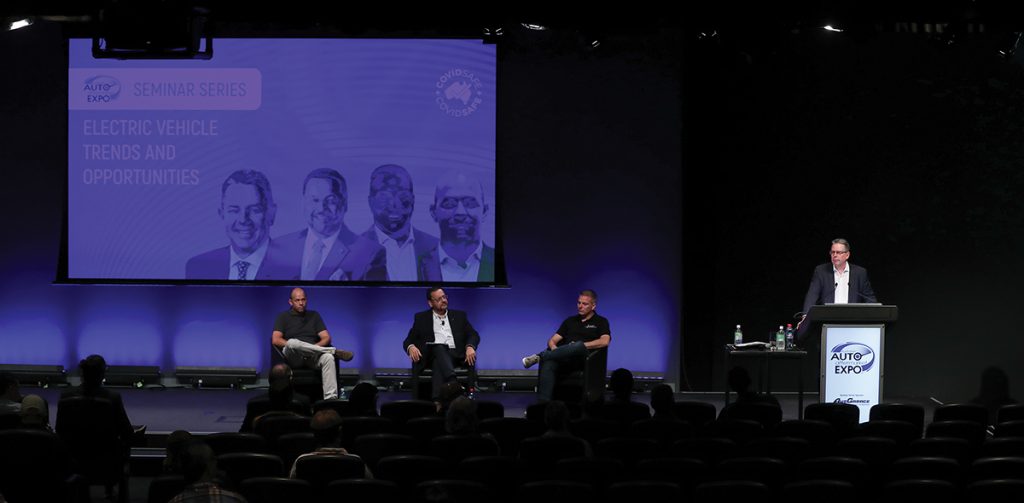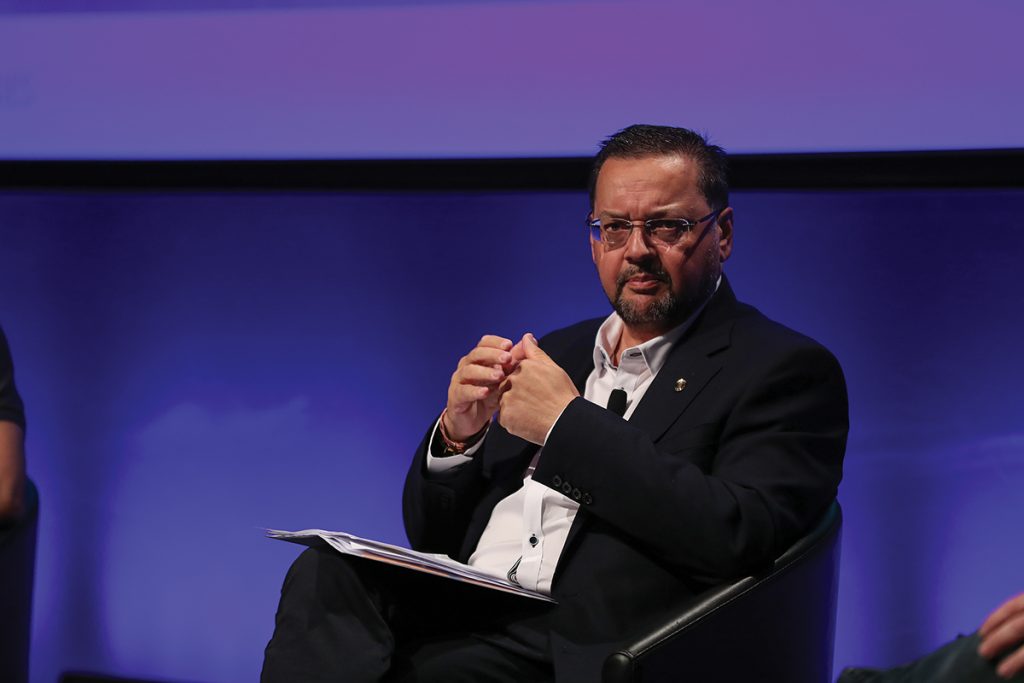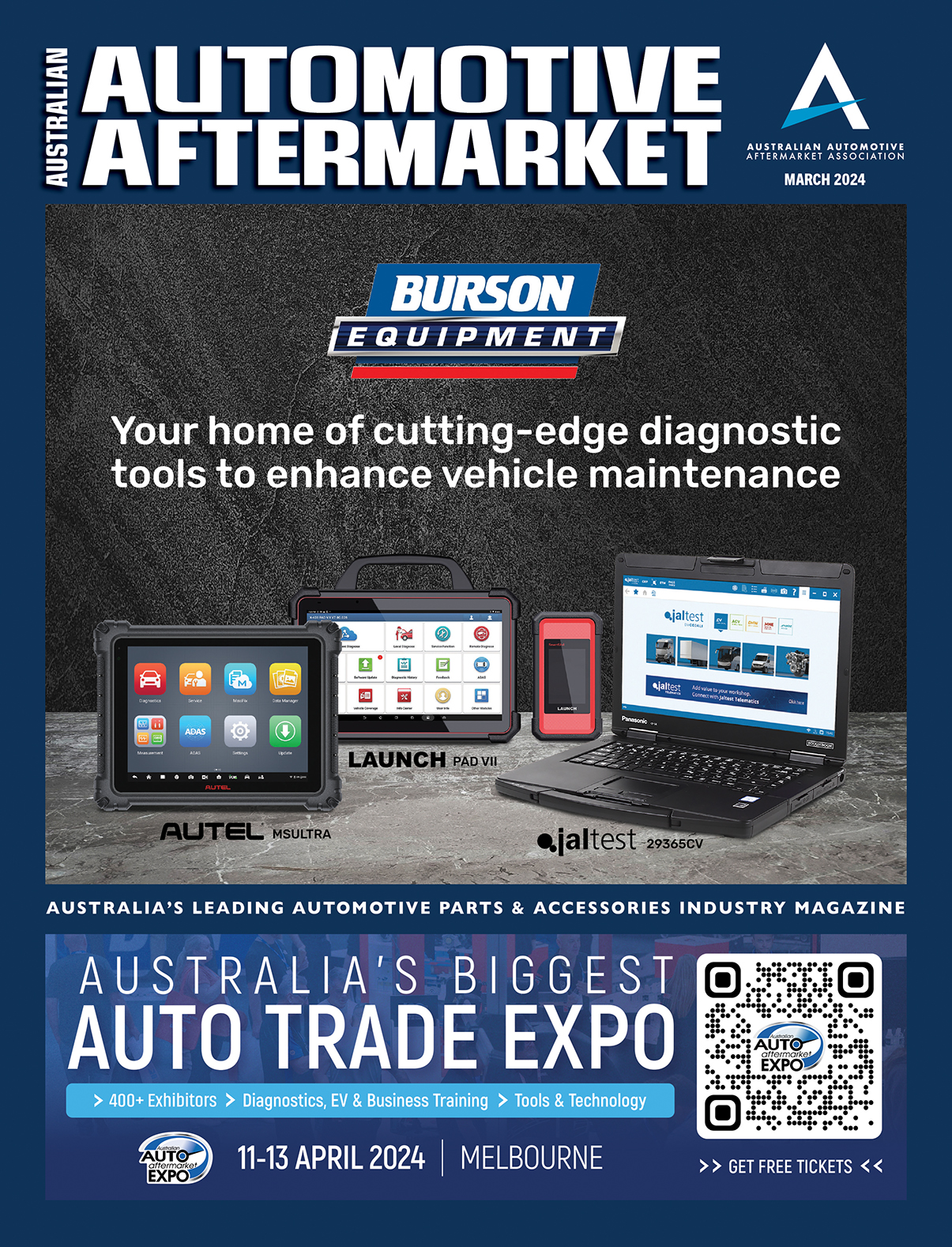PREPARING THE INDUSTRY FOR EVS
Liberal party politician says governments should support EV infrastructure and let the vehicle market growth take care of itself

Victorian Shadow Minister for Energy and Renewables, Craig Ondarchie – a strong ally of the automotive industry and the Aftermarket in particular – believes that governments need to focus more on supporting the automotive aftermarket industry to transition to EVs.
“This whole discussion to date has been about the environment and it’s not just about the environment, it’s about the automotive sector and how you deal with that,” Ondarchie said.
Ondarchie announced at the recent AAA Expo that should a Matthew Guy-led liberal party come to power in the Victorian November election that he will grant the AAAA $3 million to oversee a panel designed to progress EV training for the service and repair and aftermarket industry (see News story here).
Also at the Expo he further outlined his belief of what governments – both at a state and federal level – need to be doing on the EV scene to facilitate its introduction.
“There are four things that governments have been talking about to increase the take up of EVs in this country, one is incentivise the front end, let’s subsidise people buying electric vehicles to increase the sales. That looks good for government, but the problem is that argument is being driven by bicycle-riding bureaucrats and it is not always the right answer,” he said.
“I don’t know that anyone who can afford a $170,000 vehicle should get a tax subsidy for that.
“The second option is about encouraging and preparing the backend to be able to deal with EVs. I’m talking about ensuring we have the right infrastructure, like ensuring that we have enough power as we move away from coal-based electricity, ensuring that the network can cope with it.
“We need to make sure we have infrastructure around charging stations, and we also need to think about what we do with batteries as they drop their efficiency and come out of their useful life for EVs.”
“How do we ensure that our road network is more efficient to optimise the value of EVs?
“The third thing that government could do is get out the way and allow the market to take care of itself. I think that governments have two roles – they can either help you or get out of your way.
“Or finally, governments could disincentivise people from buying ICE vehicles and as the owner of some nice vehicles I am certainly not an advocate of that!”
Ondarchie says that it is inevitable that governments will get involved in the EV sector.

“It is a hot topic and they get to open a charging station at the MCG. They are going to get involved, but the key is what are they going to get involved in,” he said.
He believes that governments need to assist in the building of infrastructure and should let the actual vehicle market take care of itself.
“I think they should be focusing much more on the backend, the infrastructure, rather than driving people to purchase these vehicles. The market will take care of itself,” he said.
“The challenge is that if governments incentivise people to keep buying EVs, then the infrastructure just won’t cope with it.
“For example, the peak electricity use of the day is currently midday when business and industry are operating. That is going to shift to 5.00pm in the afternoon when everyone gets home and plugs their EVs in.
“Can the electricity infrastructure deal with that? I don’t know… there is a lot of work to do there.
“The problem is that if governments go down the incentivising path and get caught up in a tailspin to reach their 2030 and 2050 targets, we are going to have some trouble right across this country.
“Then we will go into a scenario where people will be trying to deal with that backend trouble. So, I think that there is something that we can do to deal with that now. My preferred option is that government, both state and federal, should focus on that backend sooner rather than later.
“The government needs to look at the infrastructure of charging stations and where to put them. There hasn’t been a long-term plan.
“What do we do with inner Melbourne, for example, where people are living in high-rise buildings that are 50 or 60 years old?
“The government should spend money on infrastructure and training and in reducing tax in the backend, and let the market take care of itself in the rest.”
Ondarchie is also flabbergasted with the current ALP-led Victorian Government’s tax on driving an EV.
“There is an electric vehicle tax in this state and that is just bizarre,” he said.
“We tax people who drive electric vehicles. Let me go on record as saying when I become the Minister later this year – that tax is gone!
“We tax hybrid vehicles in this state as well. So, you get a tax on the overall kilometers that you travel, but you also pay the petrol excise! That just doesn’t make sense… let’s tax people who drive electric vehicles so that we can use the money to incentivise people to buy more electric vehicles. Someone has missed the point there!”
He also indicated governments need to do a lot more in the training of future technicians for EVs and also in the re-training of existing mechanics to prepare them for the EV onslaught.
“Another thing that government can do is to ensure that your market is ready from an education and training perspective,” he said.
“Are you ready to deal with the onset of EVs, particularly in the Aftermarket?
“The conversations I have been having at the Expo have been about trying to get skilled employees. If that is a problem now with the internal combustion engine, how are we going to deal with that when EVs start to come into the market in numbers? So, there is a fair amount of work to do.
“There is a complete lack of collaboration between government departments and ministers.
“I think that governments need to ensure that industry and education have a role in the decision-making.”
He also warns independent automotive workshops need to put aside their competition with each other for the betterment of the industry as a whole.
“Your industry should collaborate. If there is expensive equipment to be bought maybe we do this amongst a number of repairers, not just one. That can be achieved through the AAAA,” he explained.
“Work things out together, even skills, and training.
“The independents have an opportunity to lead this development through your organization (the AAAA), particularly around skills and training, and particularly around R&D across the sector.”
For more information, visit www.craigondarchie.com.au




